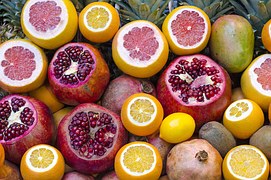An information found on prepackaged foods, which helps consumers to choose healthy foods is referred as nutritional labelling. Nutritional labelling is a section on food product, which provides nutritional information of the food item. In order to create healthful products and aid consumers to choose healthier diet, manufacturers are focused to offer products with nutritional information regarding the particular product. Thus, resulting in no constraints to consumers for choice of particular ingredients and nutritional requirements. Nutritional labelling offers information related to calorie content, vitamins percentage and other nutritional information, which helps consumer to choose the right product.
Manufacturers restrict from offering nutritional information on products is attributed to higher production costs related to labelling. The nutritional information on food products is mixed in nature for instance, it plays an important part in food purchases. In addition, offering nutritional labelling on food products is an essential part of marketing for manufacturers. Nutritional information provided on the products mainly focusses on Protein, Energy, Carbohydrate, Sodium and Fat percentage or contribution per serving or per 100g/100ml with emphasis on Nutritional Reference Value (NRV) percentage. There are various proposals, which need menu labelling, restrict commercialization of food products particularly to children and prohibit misleading claims through advertisements.
Request Free Report Sample@ http://www.futuremarketinsights.com/reports/sample/rep-gb-1023
Nutritional Labelling Market Segmentation
The global nutritional labelling market is segmented on the basis of pre-packaged food and beverage products and regions. On the basis of pre-packaged food and beverage products, it is segmented into food products and beverage products. Pre-packaged food products are further sub-segmented into snacks, dairy products, bakery products and others. Beverage products are sub-segmented into alcoholic and non-alcoholic beverages.
On the basis of regions, the global nutritional labelling market is segmented into North America, Latin America, Western Europe, Eastern Europe, Asia Pacific excluding Japan, Japan and Middle East and Africa.
Nutritional Labelling Market Dynamics
Increasing health concerns, changing consumer lifestyle have led consumer inclination towards nutritional food. This has offered space to the manufacturers to opt for providing nutritional information on the product. Furthermore, increase in obesity and overweight among individuals across the globe has led the producers’ attention on offering nutritional information on the products, leading to change in intake of food products.
Also, considering consumer intake of particular ingredient, preferences for few nutritional and healthy ingredients in the food and beverage products has an impact on the purchasing power of an individual. Thus, nutritional labelling plays a pivotal role in choice of food products, Moreover, regulatory concerns related to nutritional labelling differ from country to country. In order to know the consumer trends and preferences, which have an impact on the purchasing power of consumers for particular product, various studies have been inculcated in many countries across Europe and North American.
Request For TOC@ http://www.futuremarketinsights.com/toc/rep-gb-1023
Regional Dynamics
In nutritional labelling, few pointers such as type, nutrients labelled, reference values used, display of information, which includes whether the information is on back-of-pack or front-of-pack and type of guidance the label gives to customer. In addition, nutritional labelling is mandatory in the European member states, Argentina, Canada, Indonesia, Chile, Hong Kong, Taiwan, Malaysia, Ecuador, Israel, Brazil, India, South Korea, United States, China, Taiwan, Paraguay, New Zealand, Mexico, Colombia and Australia. In the aforementioned countries nutrients listing is clearly defined on what basis the classification is done. For instance, in 2007 nutritional labelling on prepackaged food products become mandatory in Canada. Few countries where the nutritional guidelines are being voluntarily followed and no compulsion is done for labelling include Nigeria, Mauritius, Japan, South Africa, Turkey, Venezuela, Philippines, Singapore, Kenya, Thailand and Gulf Cooperation Council (GCC).
Browse Full Report@ http://www.futuremarketinsights.com/reports/nutritional-labeling-market

